Certain simple natural ingredients of food and herbs can prevent or cure disease conditions and debility of the mother and child in the birthing process. With locally available and minimal resources, midwives try to provide the best possible care before birth, during birth and post birth for the mothers and the newborns. Here we provide details of such remedies used by the dais in our four study areas.
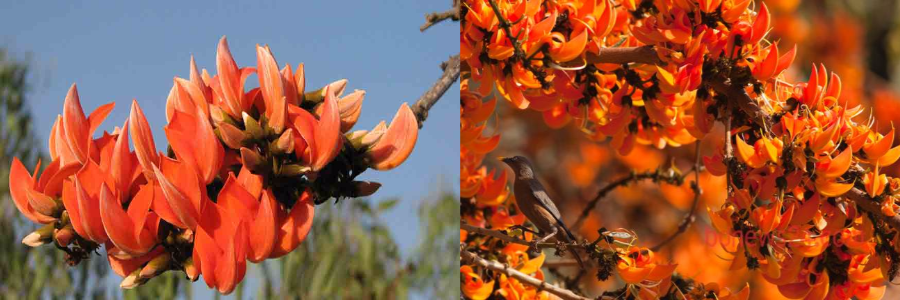
| Remedy Name | Poultice of Palash Flowers |
|---|---|
| Scientific Name (Bot/ Zoo/Chem) | Butea mono-sperma |
| Sanskrit Name | Brahma Vriksha |
| Origin of the remedy | Plant |
| Jeeva Study Sites | Maharashtra |
| Regional Name | Palaaha, Palaahaan phule (Pavri), Palas |
| Rationale: when and why used | To cool down premature labour pains. |
| Preparation | Take fresh palash flowers, heat and grind into smooth paste. |
| Usage | Smear paste on belly, or make cloth poultice and tie it. |
Textual Support: Palash Flowers have cooling property, arrest bleeding (rakta stambhan) and calms the burning sensation (daah prashmana) The Ayurvedic Pharmacopoeia of India Part 1 Vol.iv p90. The flowers boiled and used as poultice, they disperse swelling and promote diuresis, AK Nadkarni: Indian Materia Medica, p 224.volume1 Popular Prakashan Bombay 2009 .”The leaves calm the pitta (heat element) in the body ‘’http://www.medicinalplants.in/sanskritappnuse |
| Dais’ voice Dais’ voice :one can take leaves of the flame tree (palaaha), grind it and tie the paste on the belly. It stops too much blood from coming out Selya Dai_MH |

| Remedy Name | Sprig of Apamarga plant |
|---|---|
| Scientific Name (Bot/ Zoo/Chem) | Achyranthes aspera |
| Sanskrit Name | Apamaarga |
| Origin of the remedy | Plant |
| Jeeva Study Sites | Jharkhand, Maharashtra |
| Regional Name | Chirchiti |
| Rationale: when and why used | To cool down premature labour pains. |
| Preparation | Pluck the sprig of the plant |
| Usage | Tying it on the stomach, putting it in the hair |
Textual Support: Immediate action of apamarga of inducing birth pains Among the medicinal properties mentioned of Apamarga it is relevant to mention its being strong, sharp (Teeksna) and which induces movement (sara).It is tied into the hair or around the waist of the (birthing) woman to stimulate labour pains and hasten the birth. Indian Materia Medica;A.K Nadkarni vol.1,p 22 |
Dais’ voice sprig should be plucked in one breathe and then should be inserted in puaati’s ear or in her hair. By doing so strong pains starts coming and quickly baby born. As soon baby is born, it should be removed immediately otherwise puaati can become unconscious. That’s why one should have to be alert to remove twig of chirchiti’’ Burdhi Sahis(Jh) |

| Remedy Name | Earthworm, in a masking medium, e.g.in Jh in betel leaf (paan) in HP, with wheat flour, salt & ghee, in Mh with jowar in unleavened bread |
|---|---|
| Scientific Name (Bot/ Zoo/Chem) | Amynthas lumbricales |
| Sanskrit Name | bhunaag |
| Origin of the remedy | animal |
| Jeeva Study Sites | Himachal Pradesh, Jharkhand, Maharashtra |
| Regional Name | Sidi Bidi (HP),Paatal Madhu (JH), Aalyha (pavri Mh) |
| Rationale: when and why used | In Jh site: When the pains stop during labour,
it restarts the pains and hastens childbirth. In HP & Mh sites: When the breast milk is insufficient, this increases the flow of milk. |
| Preparation | a) Wrap an earthworm in a betel leaf (Jh), Dry or roast earthworm, crush, add powder to wheat flour, cook in water, salt, ghee (HP).Roast the earthworm, crush to powder, mix with jowar flour and water to make roti (Mh) . |
| Usage | (in Jh) Give to the woman to eat in the paan in Jh, as gruel in HP and as roti in Mh. |
Textual Support: Earthworm is nutritionally rich. ...heating and strength giving. Dravya Guna Vijnaana Vol.3, page 69. Earthworm remains the prime remedy, as other ingredients remain as vehicle to carry the nutrition of bhunaag. Betel leaves are cold, dry, sweet and cures tendency to bleed. Wheat and jowar flours are strength promoting. Patil, Manojkumar (2013). A review of bhunaag (earthworm), bhunaag satwa and bhunaag satwa bhasma. International Ayurvedic Medical Journal Vol.1(4); available at http://www.iamj.in/images/upload/iamj53.pdf |
| Dais’ voice If baby has come in passage and if prasoota is not having pains, then we make prasoota to eat pataal madhu (earthworm). I put the pataal madhu in a paan (betal leaf) and give it to prasoota to eat. As prasoota chew the paan she starts sweating heavily and immediately prasov happens. Kunti Sahis dai (Jh). To increase the mother’s milk, sidi-bidi (earthworms) is first dried, then it is roasted with ghee and mixed with the food. Besides this it is mixed in baadi also and given to eat. Before, it was given a lot, now it is not given, I have never fed this.Mansa dai (HP) |

| Remedy Name | Milk of Black Sheep |
|---|---|
| Scientific Name (Zoo) | Ovis aries |
| Sanskrit Name | Aja dugdha |
| Origin of the remedy | Animal |
| Jeeva Study Sites | Himachal Pradesh, Jharkhand |
| Regional Name | Kaali bhed ka dudh (HP), Bhedir doodh(Jh) |
| Rationale: when and why used | It stops excessive bleeding after birth (HP). It is applied when baby gets boils in its mouth and sheep’s milk cures it (JH). |
| Preparation | Take the milk from a black sheep |
| Usage | Milk is given to drink to woman after birth (HP). Dip finger in milk; move around in baby’s mouth. (JH) |
Textual Support: It is beneficial in bleeding disorders. Milk of sheep is hot. It aggravates hiccough and dyspnoea. It also alleviates Pitta and Kapha. |
| Dais’ voice Sometimes a baby gets haam (sores) inside its mouth. The sores are small, red-white, like on the tongue… The baby’s tongue turns white-white and is sore so cannot drink milk.Sheep milk cures it. Chhabi Bauri dai (Jh). |
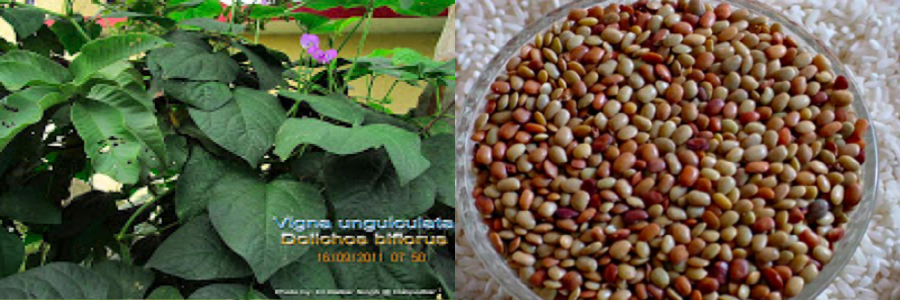
| Remedy Name | Milk of Black Sheep |
|---|---|
| Scientific Name (Bot/Zoo/Chem) | Macrotyloma uniflorum/Dolichos biflorus |
| Sanskrit Name | Khalva, Vardhipatraka |
| Origin of the remedy | Plant |
| Jeeva Study Sites | Jharkhand, Karnataka |
| Regional Name | Kurthi(Jh), Hulge (Kr) |
| Rationale: when and why used | Given after Childbirth, to stop bleeding and also for quick drying up the body (Jh) Given to cleanse stomach after abortion or miscarriage (Kr). |
| Preparation | Boiled in water till cooked properly, sieve the water |
| Usage | Milk is given to drink to woman after birth (HP). Dip finger in milk; move around in baby’s mouth. (JH) |
Textual Support: Hot and astringent, pungent in post digestion pacify vaata and kapha. It is a good arrests bleeding). Dhanvantri Nighantu page 209 by Amrit Pal Singh Chowkhamba Delhi 2008 |
Dais’ voice According to us kurthi is very good as it dries the body soon [bleeding stops early] and mother gets milk in her breasts. – Karuna, Sahis Dai (Jh) . |
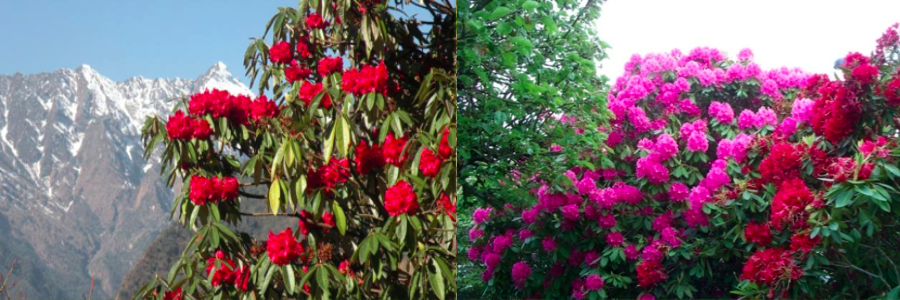
| Remedy Name | Juice of flowers of Burransh |
|---|---|
| Scientific Name (Bot/Zoo/Chem) | Rhododendron arboreum SM. |
| Sanskrit Name | Kurvak |
| Origin of the remedy | Plant |
| Jeeva Study Sites | Himachal Pradesh |
| Regional Name | Burransh |
| Rationale: when and why used | It stops post partum bleeding. |
| Preparation | Branss(buransh) flowers are dried nicely and then grinded properly. Then it is boiled to make juice, filtered and is given to the woman to drink. |
| Usage | After birth when woman starts having profuse bleeding then she is given this juice to drink. |
Textual Support: Rhododendron arboreum Sm. Burans, Brass Flowers are used for making a refreshing drink. They have many medicinal properties. They are useful in amoebic dysentery, diarrhea, fever, rheumatism, wounds healing, headache and nose bleeding.’’ Singh Kamal Jit and Thakur Anil Kumar Medicinal Plants of the Shimla hills, Himachal Pradesh: A Survey International Journal of Herbal Medicine 2014; 2 (2): 118-127 |
Dais’ voice HHS, local dai, vaidya Durga Das. |
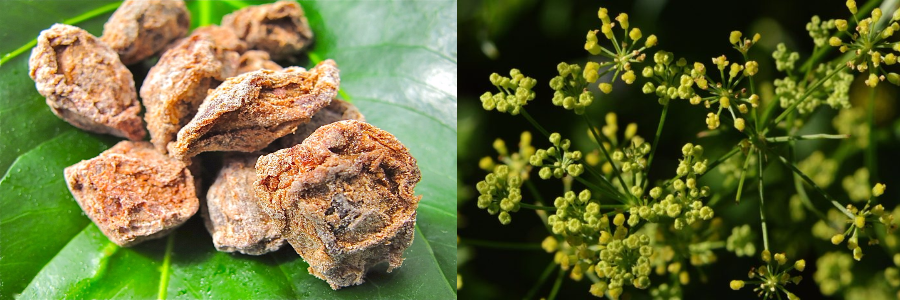
| Remedy Name | Powder of heengu/ asafoetida |
|---|---|
| Scientific Name (Bot/Zoo/Chem) | Ferula narthex Boiss. |
| Sanskrit Name | Hingu |
| Origin of the remedy | Plant (dry hingu is gum from the plant Ferula assafoetida L ) |
| Jeeva Study Sites | Karnataka |
| Regional Name | Ingu |
| Rationale: when and why used | It creates heat in the body of the woman, who has given birth, she will not catch cold. Mother and child will be healthy |
| Preparation | Small amount equal to a jowar grain is to be given. |
| Usage | Immediately after birth, dai gives asafetida to swallow and asafetida should be kept in cotton and placed in the ears. |
Textual Support:we give asafetida to eat if she eats, everything becomes clean that is why we give. In mudde(ragi balls) rice, we give. After three days of delivery, after nine days little once or twice we give that is all. It is heat creating she should be able to tolerate it, isn’t it?” Husenabi dai (Kr) “Asafetida and cotton should be put in the ear, she will not become cold”. – Irakka, Bhovi Dai (Kr) |
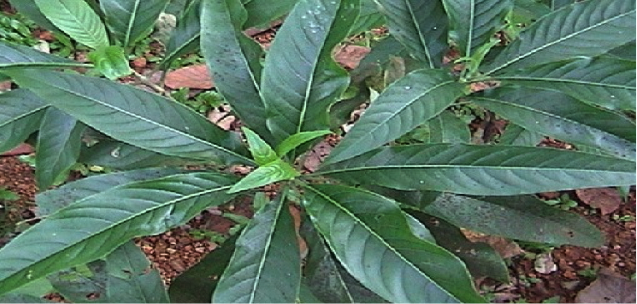
| Remedy Name | Ash of Wood of Vasa |
|---|---|
| Scientific Name (Bot/Zoo/Chem) | Adhatoda vasica. |
| Sanskrit Name | Vasaka , simhparani |
| Origin of the remedy | Plant |
| Jeeva Study Sites | Himachal Pradesh |
| Regional Name | Bashuti |
| Rationale: when and why used | This relieves the mother of the griping pain in belly with loose motions |
| Preparation | Fetch 2-3 pieces of bashuti wood from forest; burn it to ash and keep it. |
| Usage | Give 1 spoon of ash to swallow with water. It is given in the morning and evening for three days. |
Textual Support: Vasa is Cold, bitter, pacifies pitta and kapha. Useful in vomiting, blood diseases, fevers.Dhanvantri Nighantu page 27 by Amrit Pal Singh Chowkhamba Delhi 2008 An odorous volatile principle called vasicine in vaasa is expectorant, diuretic and antispasmodic. Indian Materia Medica A.K Nadkarni Vol.1 p41 |
Sources : HHS, Vaidya Durga Das (HP). |
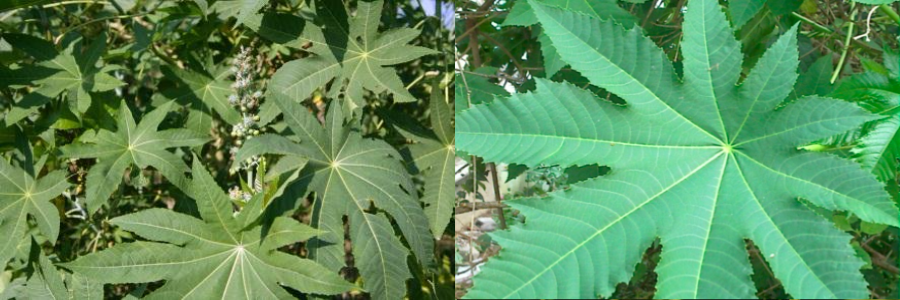
| Remedy Name | Poultice of Castor Leaves |
|---|---|
| Scientific Name (Bot/Zoo/Chem) | Ricinus communis |
| Sanskrit Name | Eranda |
| Origin of the remedy | Plant |
| Jeeva Study Sites | Jharkhand |
| Regional Name | Aerdi paat) |
| Rationale: when and why used | It is given to relieve aches and pains, to dry the body. |
| Preparation | Put castor leaves in cotton cloth to make a thupi (poultice) & heat it to give sek (fomentation). |
| Usage | Give fomentation over belly/body, for 6 days after child birth. |
Textual Support: It is hot and dispeller of vaata. Its external application is useful in curing edema and pain. Dravya Guna Vijnana. vol 2 page 60. It cures colic pain (sula), oedema, pain in lumber region and pelvic region. It alleviates vaata Materia Medica of Ayurveda based on Madanpala’s Nighantu by Vaidya Bhagwan Dash page 31. |
Dais’ voice If any woman gets tears in her prasov raasta then I give sek with aerik (Castor) leaves, then it gets cured. I apply oil on raasta and give sek with aeirik leaves (castor leaves), it reduces the swelling in raasta and also reduces the pain”. Kamla Sahis (Jh). |
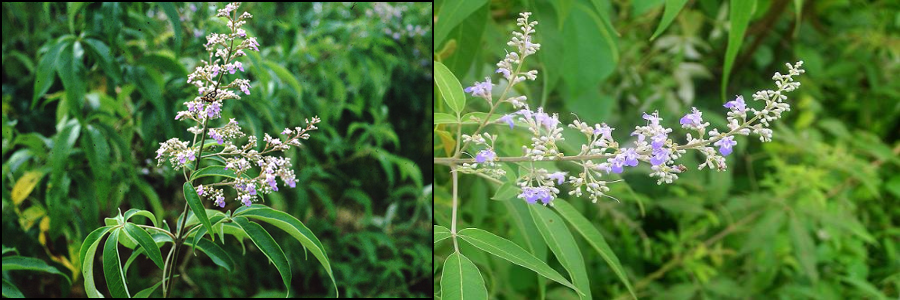
| Remedy Name | Poultice of Nirgundi leaves |
|---|---|
| Scientific Name (Bot/Zoo/Chem) | Vitex negundo |
| Sanskrit Name | Nila Sinduka nirgundi, bhutkeshi Nirgundi |
| Origin of the remedy | Plant |
| Jeeva Study Sites | Jharkhand |
| Regional Name | Buwaan paat, Sindwaar |
| Rationale: when and why used | It is given to relieve aches and pains, to dry the body. |
| Preparation | Put nirgundi leaves in cotton cloth to make a poultice (thupi) & heat it to give fomentation (sek). |
| Usage | Give heat through the poultice over belly/body, for 6 days after child birth. |
Textual Support: Nirgundi It is curative of kapha, vaata disorders. Its leaves are heated and tied on the inflamed, swollen and painful part of the body (one of its uses) Dravya Guna Vijnana vol 2, pp66-67 |
Dais’ voice Earlier we used to give sek with aerik paat (castor leaf) but nowadays it is not available that much. That’s why I give sek to the mother with buwaan paat. Bhadu dai.( Jh). |

| Remedy Name | Powder of Patish root |
|---|---|
| Scientific Name (Bot/Zoo/Chem) | Aconitum ferox |
| Sanskrit Name | Vatsnaabh, Visha |
| Origin of the remedy | Plant |
| Jeeva Study Sites | Himachal Pradesh |
| Regional Name | Patish |
| Rationale: when and why used | It helps to relieve stomach ache and swelling in the body due to vaata. |
| Preparation | Take the dry root, crush to powder and keep it ready. |
| Usage | Give ½ tsp of powder in warm water, 2 times a day (morning and evening). |
Textual Support:It balances all the three Doshas, especially, balances Vaata and Kapha Dosha (Tridoshaghna). It improves digestion strength (deepan). By adding to any unctuous (oil, ghee) substance, and giving external massage to the body, It relieves pain and oedema and strengthens nervous system Dravya Guna Vijnana Vol 2 pp 16-110 It can become poisonous and life threatening if used in large quantity. Indian Materia Medica Vol.1 p24 |
Dais’ voice There is swelling in the legs of some women; some has swelling in the hands, legs, face. If such woman comes to me, I say that it is because of baai (vaayu/ air). This is why bitter medicine like :- make powder of kadu, patish and methi, keep it and add 2-3 pinches of the powder in the sabzi or rice and eat it. Chinji dai (HP). |

| Remedy Name | Powder of Kadu root |
|---|---|
| Scientific Name (Bot/Zoo/Chem) | Gentiana Kurro / Picrorhiza Kurro |
| Sanskrit Name | Trayamana, kutaki Chireta |
| Origin of the remedy | Plant |
| Jeeva Study Sites | Himachal Pradesh |
| Regional Name | Kadu |
| Rationale: when and why used | Kadu is helps to relieve stomach ache and swelling in the body. |
| Preparation | Take dry kadu root, crush to powder and keep it ready. |
| Usage | Give ½ tsp of root powder with warm water in morning and evening. |
Textual Support:It pacifies disorders due to kapha and pitta. Trayamana like palash should be used in diarrhoea (charak). It is purifies breast milk. Dravya Guna Vijnana vol 2 pp441-442 |
Dais’ voice There is swelling in the legs of some women; some has swelling in the hands, legs, face. If such woman comes to me, I say that it is because of baai (vaayu/ air). This is why bitter medicine like :- make powder of kadu, patish and meithy, keep it and add 2-3 pinches of the powder in the sabzi or rice and eat it. Chinji dai (HP). |
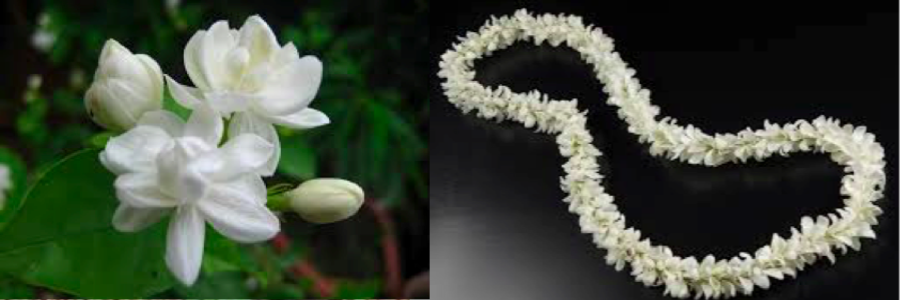
| Remedy Name | Tying of Jasmine flowers |
|---|---|
| Scientific Name (Bot/Zoo/Chem) | Jasminum sambac Linn |
| Sanskrit Name | Mallika, Mudgara |
| Origin of the remedy | Plant |
| Jeeva Study Sites | Karnataka |
| Regional Name | Dundu Mallige |
| Rationale: when and why used | If the breast is aching due to excess breast milk or if the baby has died, by putting jasmine flowers on breast milk becomes less and pain also goes away. |
| Preparation | Get Jasmine flowers. |
| Usage | Jasmine should be placed on the nipple and cloth should be tied. |
Textual Support:Flowers are smeared to the breast as a paste to arrest the secretion of milk in the puerperal state in cases of threatened abscess. Nadkarni K M. Indian Materia Medica. Indian Plants and Drugs with their Medicinal Properties and Uses. edition 2nd , vol 1. Asiatic Publishing House. 2007:P 704. /p> Swati Sabharwal, Swati Sudan, Vadi Raman (2013) Jasminum Sambaclinn : A Review International Journal of Pharmaceutical Research and Bio-science. Volume 2(5):108-130 IJPRBS http://www.ijprbs.com/issuedocs/2013/10/IJPRBS%20430.pdf Vd. PLT Girija has narrated how she cured a dancer of breast pain and inflammation by using Jasmine flowers in her book Jeevani: Ayurveda for Women (2013) Sanjeevani Ayurveda Foundation Chennai 2013 pp121-122 |
Dais’ voice : If the baby is dead then they cannot bear and they tie jasmine flower. Milk goes back. Ambajji dai (Kr). |
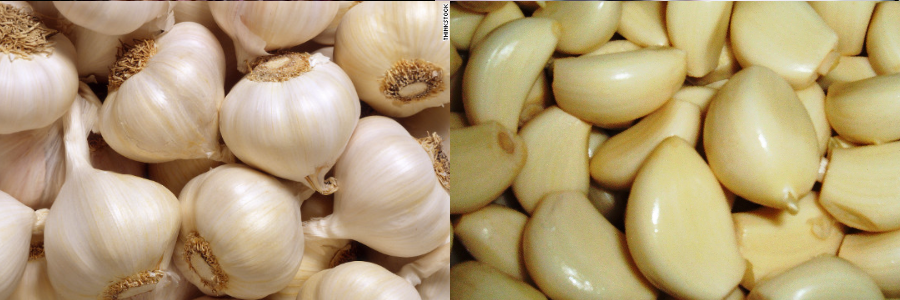
| Remedy Name | Garlic |
|---|---|
| Scientific Name (Bot/Zoo/Chem) | Allium sativum. Linn. |
| Sanskrit Name | Lasuna, Rasona |
| Origin of the remedy | Plant |
| Jeeva Study Sites | Himachal Pradesh, Jharkhand, Karnataka |
| Regional Name | Lasuna(HP), Sosun (Jh) Belluli (Kr) |
| Rationale: when and why used | It takes away pain (HP), dries up body quickly (Jh), It keeps the heat in the woman’s body, relieves pain, and increases breast milk. Protects the mother and child from evil eyes.(Kr) |
| Preparation | Garlic pods |
| Usage | 1) Garlic cloves (3 to 4 ) are given t o the mother to eat with food (Jh) 2) Garlic pods are added to the agasthagi (fire for post partum woman) to reduce the pain in the genital area. 3) Cloves of raw garlic are placed in hot rice and given to post partum woman to increase breast milk. 4) A garlic pod is rolled in cotton and placed in the ears of the post partum woman to prevent cold. 5). When young children have balagraha (repeated infections) a garland of garlic pods is tied around their neck for approximately one week.(Kr) |
Textual Support:Garlic is curative of,vaata and kapha disorders. It is hot, pungent and heavy. CS su 27 verse176-177 |
Dais’ voice : If the laarthi (new mother) catches cold, we would make Jhol and add a little bit of garlic, little black pepper and then give to drink and the cold would get cured. Chamakali dai (HP) If there is fever and pain in the body, mustard oil is heated, garlic, saunf, dunu is added, cooked for some time and then massage the whole body with it. By doing this woman does not catch outside wind and she becomes alright.’’ Chinji dai (HP) To the new mother first they give chewra-bhaaja and kultthi ka paani, along with a little ghee, sosun and raw haldi to eat for a few days. This helps to relieve pain in the belly. – Burdhi, Sahis Dai (Jh) 'Till three days after delivery bread and gruel are given. After three days rice, mudde, garlic should be given. Thin ragi mudde should be given’’ Ningamma dai (Kr). We give the warmth of fire to the woman in the fire we put dried neem leaves, garlic peels, carom seeds, ragi; after the bath we give it to her (fumigation) By taking the warmth woman will not catch cold.’’ Husenabi dai (Kr) ’We don’t give bath to the woman [soon after delivery]. We keep garlic and cotton in the ear and tie cloth to the stomach and give gruel and make her sleep’’ Dyamakka dai (Kr) |

| Remedy Name | Ghee |
|---|---|
| Scientific Name (Bot/Zoo/Chem) | Clarified butter |
| Sanskrit Name | Ghrita |
| Origin of the remedy | Animal |
| Jeeva Study Sites | Himachal Pradesh, Jharkhand, Karnataka |
| Regional Name | Ghee |
| Rationale: when and why used | Gives strength, good for birthing woman, before birth (gives strength, lubricate all passages) and after birth increases breast milk, it heals cuts and wounds of the birthing woman. |
| Preparation | Made from cow’s milk |
| Usage | Given in foods, gruels, decoctions as much as she wants. |
Textual Support:Ghee pacifies vaata and pitta. It is one of the essential dietary ingredients for those debilitated due to treatments .It helps improve digestion power. (Ashtanga Hridaya Su. 9/2). “Ghee promotes vital essence and vital fires. It is curative of pain in vagina, ear and head. It is the best of the unctuous substances.”(CS, su,chap 27,verse 231-232 ) page200. |
Dais’ voice : if pain comes one dry date, curry leaf stick, jaggery are all boiled together and in one cup ghee is added and given to drink. Husenabi dai (Kr) If there is fever and pain in the body, mustard oil is heated, garlic, saunf, dunu is added, cooked for some time and then massage the whole body with it. By doing this woman does not catch outside wind and she becomes alright.’’ Chinji dai (HP) To the new mother first they give chewra-bhaaja and kultthi ka paani, along with a little ghee, sosun and raw haldi to eat for a few days Burdhi dai (Jh). After prasoota if the woman has pain in her belly, the belly is massaged and bachchedaani (womb )is placed in its position. After that she is given to eat ghee, milk and lugda/baadi. By eating these things, bachchedaani sits in its place Mansa dai (HP) When there is heavy bleeding (after prasoota) I grind the sontth, roast it with ghee and give it. By eating this bleeding stops. Mansa dai (HP) |
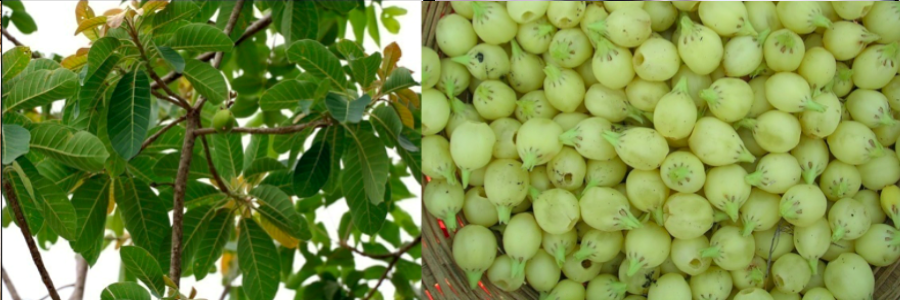
| Remedy Name | Mohua Liquor |
|---|---|
| Scientific Name (Bot/Zoo/Chem) | Madhuca longifolia |
| Sanskrit Name | Madhuka,Gudapushpa |
| Origin of the remedy | Animal |
| Jeeva Study Sites | Maharashtra |
| Regional Name | Moharda huru / horu (Pavri) |
| Rationale: when and why used | To help remove bad blood from her body. |
| Preparation | Take dried mohu flowers, soak until fermented, then distil it to make the liquor |
| Usage | After birth give 2 glasses of mahua liquor to woman to drink. |
Textual Support:The liquor produced from the flowers is a powerfully diffusible stimulant (stimulant that produces a rapid but temporary effect), an astringent tonic and appetiser. The flowers from which the liquor is made are at once cooling, demulcent (provide a protective coating and soothe irritated body tissues) and nutritive and tonic. AK Nadkarni :Indian Materia Medica, pp 179-181.volume1 Popular Prakashan Bombay Madhuka’s specific action is to alleviate kapha and vayu. Its therapeutic usage is to heal the ulcers (wounds).It is strength promoting and nourishing.VI.46-48, P283, Materia Medica of Ayurveda Based on Madanapala’s Nighantu by Vaidya Bhagwan Dash. B.Jain Publishers New Delhi 2008. . |
Dais’ voice : ‘’All of the bad blood (kharaab khoon) should fall once the kuchru (placenta) comes out. If there is less blood flow then it may be changing into clots. Therefore I give the woman liquor to drink. I give one bottle of mohua liquor. Then the blood flows slowly for 6 to 7 days’’. Gugli dai (Mh) |
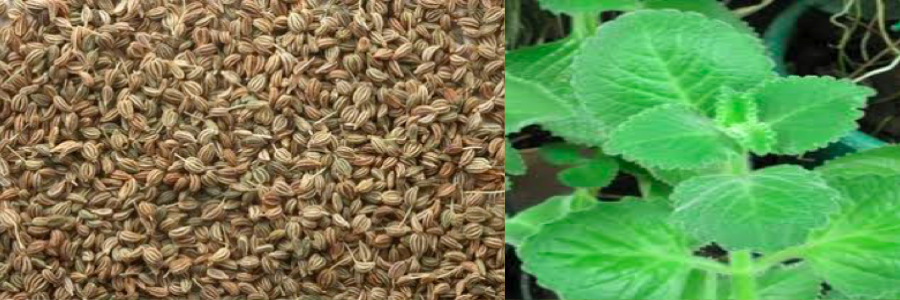
| Remedy Name | Ajwain ka paani |
|---|---|
| Scientific Name (Bot/Zoo/Chem) | Trachyspermum ammi |
| Sanskrit Name | Yavani |
| Origin of the remedy | Plant |
| Jeeva Study Sites | Jharkhand |
| Regional Name | Juwain |
| Rationale: when and why used | To help remove bad blood from her body. |
| Preparation | For the mother --Soak one tsp. of ajwain in one glass of hot water for one hour
For the child—Soak some ajwain (tied in a cloth) in water, through the night, give it next morning. |
| Usage | Ajwain water is given to drink to the woman after child birth for 6 to 10 days. Ajwain water (one tsp) is given to the child every morning till recovered. If mother chew ajwain, the baby passes stool,if the stool is not comimg. |
Textual Support:Ajwain is digestive, stimulant, pacifies vaata, used in fevers and difficult labour, for cleaning of the uterus and curative of worms’ infestation. Dravy guna Vijnana vol2. pp495-496. |
Dais’ voice : When baby get aamal (acidity, vomits) then we give ajvain water to drink. In night tie some ajvain in a piece of cloth and soak it in one cup of water and then in morning give this water to the baby to drink. Meera Sahis dai (Jh) If baby is not passing stool, mother chews ajwain and gives to the baby (through milk). After that baby passes stool. Nardei dai( HP) |
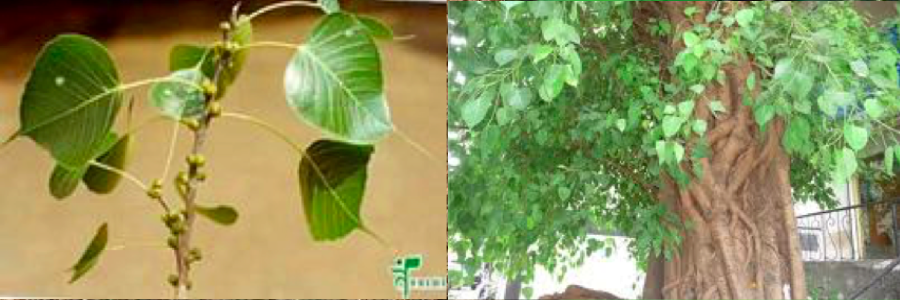
| Remedy Name | Paste of the Bark of Peepal Tree |
|---|---|
| Scientific Name (Bot/Zoo/Chem) | Ficus religiosa |
| Sanskrit Name | Ashvatha,Pippala |
| Origin of the remedy | Plant |
| Jeeva Study Sites | Jharkhand |
| Regional Name | JadBaakla |
| Rationale: when and why used | Applied when cord stump gets infection or pus formation and it cures it. |
| Preparation | Bark of the peepal tree is taken. It is grinded on a stone to make paste putting splash of water. |
| Usage | A pinch of its paste is applied on the cord stump of the newborn baby. |
Textual Support:It cures ulcers (vrana) and vitiation of blood(asra). It alleviates pitta and kapha Materia Medica of Ayurveda based on Madanpala’s Nighantu by Vaidya Bhagwan Dash page 235. |
Dais’ voice ::“My younger daughter’s bhuku (navel) got sepsis. At that time ANM came to visit our village, I showed to them. They asked to take her to Ranchi. I asked them if they would give money to take her there. They said that she got worms in her navel. I got angry and asked them to leave my house and again come back after seven days to see whether it gets fine or not. Then I used to grind jad baakla (bark of peepal tree) and apply it on her navel with feather of some bird. When again ANM came to our village then I brought them to my house and showed my daughter who was completely cured”Kunti Sahis dai (Jh) |

| Remedy Name | Application of Mango Seed Paste |
|---|---|
| Scientific Name (Bot/Zoo/Chem) | Mangifera indica |
| Sanskrit Name | Amra |
| Origin of the remedy | Plant |
| Jeeva Study Sites | Jharkhand |
| Regional Name | Aamer kuhu |
| Rationale: when and why used | Used when baby doesn’t pass urine or stool. |
| Preparation | Take the seed out of its husk & grind it to a paste. |
| Usage | If baby doesn’t pass urine or stool, apply paste on navel & leave it there for whole day. |
Textual Support:In Charak Samhita Mango is classified under Purisha sangrahaniya – Group of herbs that increase bulk of feces and Mutra Sangrahaniya – Group of herbs that increase volume of urine. |
Source HHS, Local knowledge |
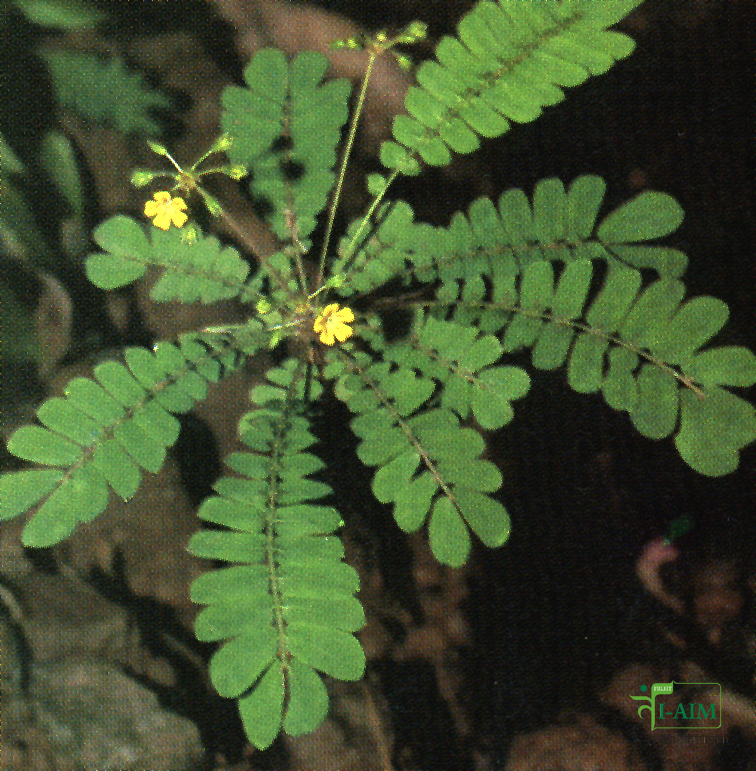
| Remedy Name | Lajjalu |
|---|---|
| Scientific Name (Bot/Zoo/Chem) | Biophytum sensitivum (L.) |
| Sanskrit Name | Jalpushpa, Lajjalu, krichhraha |
| Origin of the remedy | Plant |
| Jeeva Study Sites | Maharashtra |
| Regional Name | Laajro khardo (Pavri) |
| Rationale: when and why used | To ease childbirth; to cure kaata.(prolapsed inner part) |
| Preparation | Take a laajra khado plant, crush it, mix in water. |
| Usage | Give the water to drink. |
Textual Support:“The leaves of this herb are diuretic and expectorant. The ground leaves are applied to wounds and bruises. A decoction of the herb is given for hypertension.” Medicinal Plants, (Indigenous and Exotic) Used in Ceylon PART IV. D. M. A. Jayaweera ( Former Superintendent, Royal Botanic Gardens, Peradeniya Sri Lanka) A Publication of the National Science Council of Sri Lanka Colombo, 1982 page 171 “Used in gonorrhoea and Lithiasis” (the formation of stony concretions (calculi) in the body, most often in the gall bladder or urinary system.) Indian Materia Medica AK Nadkarni vol.1, p199. |
Dai's voice : We can find laazro khardo (a kind of sensitive plant) in the fields. If the kaata comes before the baby, one can blow on laajra khardo and sprinkle water from it on the jaagu (vulva with kaata ). The kaata goes in and the baby comes out. Jemali dai (Mh) |
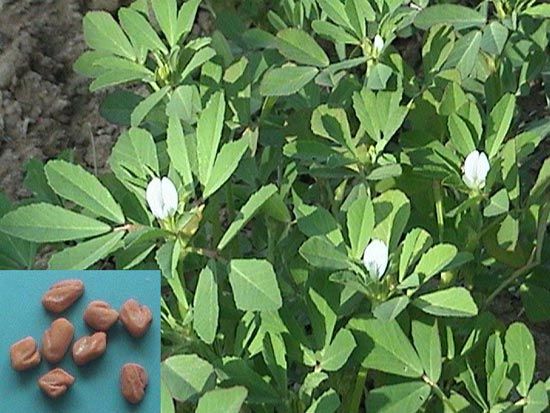
| Remedy Name | Fenugreek seeds and Leaves |
|---|---|
| Scientific Name (Bot/Zoo/Chem) | Trigonella foenum-graecum Linn. |
| Sanskrit Name | Methica |
| Origin of the remedy | Plant |
| Jeeva Study Sites | Himachal Pradesh, Karnataka, Maharashtra, |
| Regional Name | Mithere (HP), Menthyekalu (Kr) Metha(Mh) |
| Rationale: when and why used | Given after birth to increase strength, to enhance breast milk, to balance vaata in the body, to cure swelling in the body. |
| Preparation | Methi seeds are crushed and prepared as either as chutney (Kr), porridge(Mh),with food (HP). |
| Usage | Given to eat in many forms to the woman after birth. |
Textual Support:It cures vaata. It increases breast milk, it is a good nervine tonic. It is used to alleviate pain, inflammation and indigestion. Dravya Guna Vijnana vol.2 pp 823-825. |
Dai's voice : We make laadu (sweet balls) of coconut and methi seeds to increase her milk. Mh_Jemali. There is swelling in the legs of some women; some has swelling in the hands, legs, face. If such woman comes to me, I say that it is because of baai (vaayu/ air). …make powder of kadu, patish and methi and keep it and add 2-3 pinches of the powder in the sabzi (vegetables) or rice and eat it. Chinji dai (HP) |
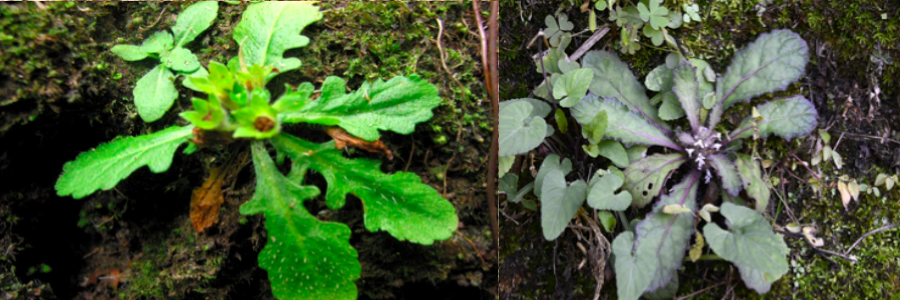
| Remedy Name | Water of Kadcha, Neelkanthi |
|---|---|
| Scientific Name (Bot/Zoo/Chem) | Ajuga bracteosa |
| Sanskrit Name | Neelkanthi |
| Origin of the remedy | Plant |
| Jeeva Study Sites | Himachal Pradesh |
| Regional Name | kadcha |
| Rationale: when and why used | This relieves cold from the body. |
| Preparation | Take leaves of kadcha and crush, soak it in the water strain through cloth. |
| Usage | Given to drink as much as woman can drink. |
Textual Support:The leaves are regarded as stimulant, tonic, analgesic and used in chills and fevers. Narain Singh Chauhan (1999) Medicinal and Aromatic plants of Himachal Pradesh pp.83-85. |
Source:Local Knowledge |
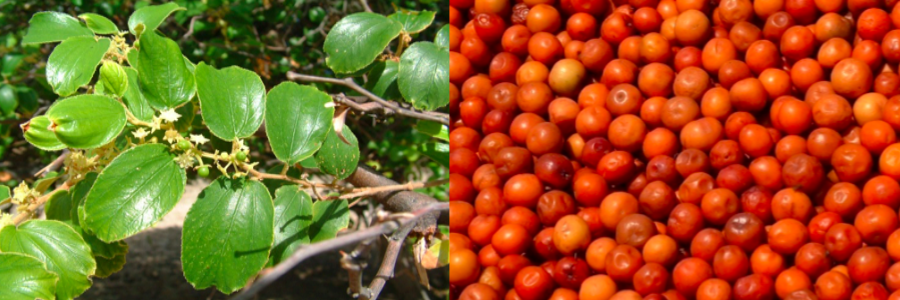
| Remedy Name | Application of Jujuba Leaf Paste |
|---|---|
| Scientific Name (Bot/Zoo/Chem) | Ziziphus mauritiana |
| Sanskrit Name | Badar |
| Origin of the remedy | Plant |
| Jeeva Study Sites | Jharkhand |
| Regional Name | Kool patta/ Ber ka patta |
| Rationale: when and why used | This paste is applied when baby doesn’t pass urine and stool. |
| Preparation | Ber’s leaf is grinding on a flat stone to make paste of it. |
| Usage | Paste of the ber’s leaf is applied around the cord stump of baby and let it remain for the whole day. |
Textual Support:Leaves are used in the treatment of diarrhoea, gastric disorder, fever, liver damage and pulmonary disorders. |
Source:Local Knowledge |

| Remedy Name | Root of mustard plant/Oil of mustard |
|---|---|
| Scientific Name (Bot/Zoo/Chem) | Brarica nigra |
| Sanskrit Name | Sarsapa |
| Origin of the remedy | Plant |
| Jeeva Study Sites | Himachal Pradesh |
| Regional Name | Sarson ki jad |
| Rationale: when and why used | If a small baby is not able to pass stool, then this root is moved around in the anal passage helps cure the problem. |
| Preparation | First root of mustard plant is brought from the field and cleaned properly with water. |
| Usage | It is moved around in the anal passage two to three times, at any time of the day. |
Source:local knowledge |
Dai's voice:‘If baby is not passing stool, then bring a mustard plant, wash it properly with water, then mover around that root inside the raasta, the baby will passs stool.’’Reshmo dai (HP) |
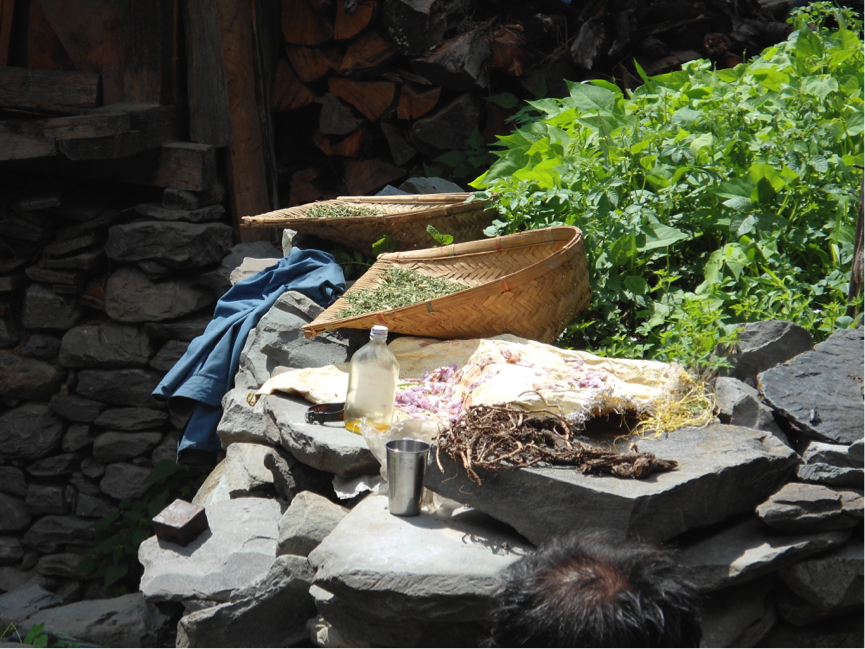
Women and dais traditionally used herbs and other substances rather than pharmaceuticals for health and healing. These herbs were shown to Jeeva researchers high in the mountains of Himachal Pradesh.